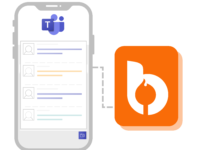Anahita Cameron has cultivated world-class HR strategies across retail and healthcare settings. Now as Chief People Officer at Thrive Pet Healthcare, she’s differentiating the experience of frontline caregivers and support staff across a 400-location, 10,000-employee organization.
In our conversation, she discusses the evolution toward a team member-centric experience design, as well as the importance of promoting flexibility in the initiatives she deploys.
What’s something new you or your team is focused on in 2023?
Anahita: It’s no surprise that the talent supply is very limited, especially in the pet healthcare industry, so we’re always focused on differentiating Thrive Pet Healthcare from everyone else. In 2023, that’s been doubling down on our team member value proposition – attracting and retaining great talent.
We started by surveying our team members to identify what’s most meaningful to them – what’s important to doctors might differ from support staff. Also, every team member is at different stages of their professional and personal journeys, so we wanted to understand their individual needs.
We found flexibility is one of the most important areas to team members and one we are pushing ourselves to differentiate. Since most of our 10,000 team members can’t do their work remotely, we have to be creative. We’re just getting started but are looking at things like hiring more relief doctors to enable our full-time doctors to take more time off or giving more choices for scheduling, like an option for 3, or 12-hour shifts if that’s someone’s preference.
Burnout is a real thing in the veterinary profession and healthcare space generally and is something we’re very focused on as well. We’ve partnered with Lyra Health to offer a variety of mental health support resources and benefits to our teams. One of them is quick access to therapists or coaches when they need it the most.
What’s your organization’s remote work policy?
Anahita: For those who are eligible to work remotely, we’ve left it pretty loose. We encourage our team members to come into the office a few days a week, but nothing is mandated.
We’ve tried to make it enticing for folks to come in with team meetings, lunches, and happy hours – a mix of work and non-work interactions. We’d love to see more people in the office but also respect team members’ choice of work environment that allows them to be the most productive throughout the day.
Related: Remote Employee Engagement: The Biggest Challenge | Bonfyre
How do you build culture across 400+ different locations?
Anahita: On top of the challenges of being a large, distributed organization, each location is its own business, some of which have been created from the ground up and others through acquisitions.
In my experience, everything starts with the mission, vision, and values – this is where you get the non-negotiables for our culture, setting expectations for how we behave as a team and what we value.
From there, it’s all about frontline leadership – if they are driving towards the same goals, you should be able to reduce the variability from location to location. We start with regional/area levels to ensure everyone is aligned on where we’re going and why so they can bring that to the local hospital level. Conscious investment in leadership training for regional and hospital leaders helps build the foundation for the collaborative culture.
We know the benefits of remote work. What are some of the challenges with it so far?
Anahita: Onboarding someone new into the organization is much more difficult because you’re not running into people in the hallway or the water cooler. As a result, building relationships takes longer, and you get less of a 360-degree viewpoint on the culture and how the organization works.
Keeping teams engaged and collaborating at a high level is also more difficult. Nothing beats the team being in the room whiteboarding together for brainstorming, working through priorities, or getting to know each other. That’s why my team has quarterly offsites to get together in person regardless of where someone is working so we can do our strategic planning together with team-building activities.
We also fill the gaps with virtual social gatherings like trivia or guest speakers on different topics that have had surprisingly high participation – people want that and are looking for it.
What’s different about Employee Experience in 2023?
Anahita: We’re starting from the team member rather than the company. Before, it was “This is how we do things around here and what we offer.” Now we’re thinking through the team member’s experience throughout the whole journey in order to develop things around them (rather than the organization).
Employees have choices, and what’s going to make someone choose us over someone else? We look at segments of our population to understand what matters most, whether it’s flexibility, hourly rate, or something else. Irrespective of the role, we’re finding that everyone wants career growth and development.
One way we support career progression and performance is through Thrive U and the Certified Thrive Leader Program (CTLP). CTLP is available to any leader in the organization and includes multiple courses, an assessment, and a cohort with live participation. In addition, a certificate is awarded upon completion – a badge of honor in some ways.
Finally, the frontline leadership role is so much more difficult in 2023 than it has been before. For them, it’s not just about topline revenue or talent… it’s everything all at once. They pick up the slack if they are short-staffed because someone has left or there is an opening.
Investing more in those leaders and enhancing their skills is critical and will have the biggest impact on attraction, retention, and performance.
Related: Improving the Employee Experience: Where Does It Start? | Bonfyre Breakdown
For organizations with large frontline populations, one of the challenges remote work creates is the “haves” and “have nots”. What are some ways organizations might address this?
Anahita: We don’t hear about it often from the field, but it’s something we are very aware of and intentional about. That said, at the end of the day, it would be a mistake to have a one-size fits all approach – different roles have different demands and work schedules. That’s okay as long as we are aligned around one purpose. For us, it is about nurturing people and pets through meaningful relationships and exceptional pet care.
How is your organization leveraging engagement surveys today?
Anahita: We do an annual survey and are working our way up to pulse surveys, probably sometime next year.
This last year we did robust action planning across the entire organization, even at the hospital level. Each hospital picks one corporate priority and one that’s very specific to them at the local level. This creates site-level plan ownership, and we’re very proud of our 85% completion of action plans from the survey.
Creating action plans for 400+ sites is no small task. To enable this, we identify engagement captains by soliciting volunteers and nominations from the field to find people who want to roll this out with their peers through a “train the trainer” model. So far, it’s been working great.
But to get there, you must have buy-in from every level – CEO all the way down. They need to agree that it’s important and that it will have a clear ROI.
Related: How to Make Better Employee Pulse Surveys | Bonfyres
For someone else in your role, what would you say should be on their 2023-2024 priority list?
Anahita: It depends on the level of maturity of the organization. If all the basics are in place, they can think about AI, deeper analysis of their People data, or other fun future-oriented initiatives. But if you don’t have solid fundamentals – performance reviews, development, onboarding, career pathing, etc. – then that’s where you need to start.



 6 min
6 min




